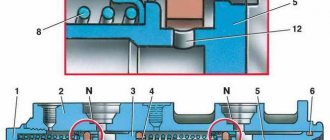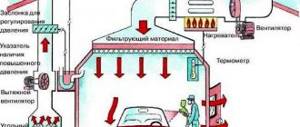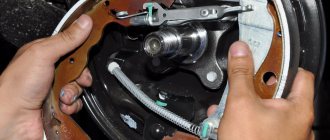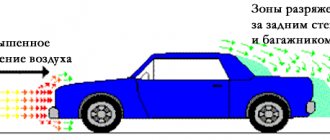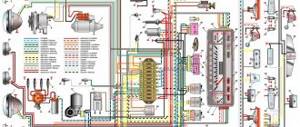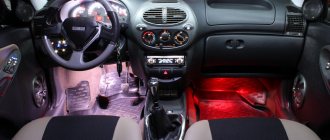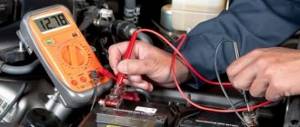How to calculate the braking distance of a car.
Most car owners probably know how quickly a car accelerates. Even if you haven’t measured the acceleration dynamics of your car, you’ve probably looked at the factory specifications of your car, where the automaker usually indicates the minimum possible acceleration time from 0-100 km/h. But now the question is: how long does it take to stop your car? Do you know this? We are sure not. But it turns out that you can calculate the braking distance quite easily using a simple formula. We'll tell you how it's done.
There is no such thing in the Universe or matter that can stop instantly. Likewise, any car, when you press the brake pedal, may not stop immediately. The fact is that in order for a car or any object in our world to stop, it is necessary for it to lose the energy that moves it. As a result, any car has a braking distance that it covers from the moment you press the brake pedal until it comes to a complete stop. This is the braking distance of the car.
But in fact, the braking distance of any car depends not only on its characteristics and braking system, but also on the driver’s reaction when pressing the brake pedal. After all, in order to make a decision about the need to brake and press the brake pedal, time is required, which, although minimal, is enough for the car to cover a long distance. This is especially important at high speeds, where in a few fractions of a second the car travels a considerable distance. So, in the end, in order to calculate the actual braking distance, you need to take into account not only the time and distance traveled by the car from the moment the driver presses the brake pedal until the car stops, but also the time required to make the decision to brake. The fact is that when making a decision to brake, we waste precious seconds. Here's an example:
- Response Time : Before the driver presses the brake pedal, he must assess the driving situation and determine whether braking is necessary. You also need to understand what kind of braking is necessary - a complete stop of the car or a simple reduction in speed. Typically, according to numerous studies, most drivers need about 0.1 seconds to do this.
- Time required to press the brake pedal : After the driver has realized that he must brake, it takes approximately 0.8 seconds to move his foot from the gas pedal to the brake pedal and press it.
In addition, even when the brake pedal is pressed, there is still a small loss of time due to the fact that when the brake pedal is pressed, the car, as a rule, does not begin to brake sharply. And in order for the car to actually begin to sharply reduce speed, it is necessary to increase the pressure on the brake pedal (the threshold time required for the required brake pressure in the brake system). Also, all cars have different response times to the brake pedal. Everything here, of course, depends on the design of the brake system and the presence of various electronics that control the car’s brakes.
See also: All-wheel drive proved to be better at braking than two-wheel drive: Video
You won’t believe it, but in order for the car to actually start braking after pressing the brake pedal, almost 1 more second of time is needed. Can you imagine how much this is when driving at high speed? In that extra second you can travel a very long way.
Braking distance formula
Let's consider the two most popular formulas:
1) S =V2/2μg.
Description:
- μ is an indicator of adhesion,
- g - 9.81 m/s - this is the value of the acceleration of free fall,
- V is the vehicle speed at the beginning of braking (indicated in m/s).
2) S=Ke*V*V/(254*Fs).
Description:
- Fs is the coefficient of adhesion of the vehicle to the road surface,
- V0 is the vehicle speed at the beginning of braking (indicated in km/h),
- Ke is the actual braking coefficient,
- S is the braking distance (indicated in meters).
To determine the braking distance, it is better to use a special speed calculator. Such services are available on specialized websites.
What is the braking distance formula?
In general, car braking is divided into two types. For example, there is normal braking, and there is emergency braking, when you need to suddenly stop the car to avoid an accident.
When braking in everyday life, for example, if you want to stop a car at a traffic light, you usually press the brake pedal much smoother and softer than if you need to completely stop the car in a parking lot. In this case, you are not applying maximum braking force to the car. With such smooth and soft braking, as a rule, the braking distance (braking distance) increases. The approximate stopping distance for normal braking can be calculated using the following simple formula:
(Speed in km/h: 10) x (speed in km/h: 10) = braking distance in meters
During emergency braking, the brake pedal is usually pressed fully and with full force. Due to the higher braking force, the stopping distance of the car is usually reduced by about 2 times. Therefore, the braking distance can also be calculated using the following formula:
(Speed in km/h : 10) x (speed in km/h : 10) / 2 = braking distance in meters
Attention: The braking distance calculated using these formulas is only an approximate value and a hint for drivers. In fact, in reality the braking distance can be either shorter or longer. After all, the braking distance depends on the driver’s driving skills and experience, the technical condition of the car, its design, make, model, road conditions, the condition of the tire tread and many other factors that directly affect the braking distance. But thanks to these formulas, you can approximately calculate the average braking distance of a car at a certain speed. This will allow you to adjust your driving style and will also be a good guide for novice drivers.
Concept of car braking distance
Braking distance is the distance covered by a car from the start of braking (the moment the drive is activated) to a complete stop.
What factors affect braking distance?
Human life is priceless. In an emergency situation (accident), braking distance is a decisive factor that cannot be ignored. Because every meter can cost a life.
Study the factors that affect stopping distance. This knowledge will help you stay healthy and avoid accidents:
- the driver will take timely measures to reduce speed,
- the pedestrian will have the opportunity to assess the safety of the crossing.
1) Condition of car tires . Tires are one of the most important elements of a wheel. They ensure safety while the vehicle is moving.
When choosing a tire, you need to pay attention to the tread height. What is a protector? This is a tire element. It protects the tire from damage and punctures. Correctly selected tires will ensure good vehicle control.
The vehicle's road grip indicator directly depends on the technical condition of the tread. There is a wide range of tires on the market. The tread depth is 5–17 mm.
In this case, you need to separate winter and summer tires:
- The tread of winter tires is 8.5–9.5 mm.,
- The tread of summer tires is 7.5–8.5 mm.
Based on the results of the experiments, it was found that when the tread wears out, the braking distance of the car increases significantly. The tread wears out during use. Therefore, the friction force is significantly reduced.
In winter, be sure to use only winter tires. Whereas in the summer - summer tires. This will ensure optimal machine control. To make winter tires, special soft rubber is used.
Such products have deep grooves and a ribbed pattern. These features provide excellent grip in the winter season. And for the manufacture of summer tires, hard rubber is used.
2) Condition of the brake system . This system is designed to stop the car, as well as to reduce the speed of movement. This is one of the most important systems in the car. Because it provides security.
Let's consider point 2.3.1. Traffic rules It is prohibited to drive a vehicle with faulty brakes. A malfunction of this system results in loss of vehicle braking efficiency.
It is imperative to take into account the response time of this system. According to the requirements, the response time is no more than 0.6 s.
Let's consider the factors that affect the response time:
- system design,
- type,
- state,
- quality.
The length of the braking distance depends on the response time of this system.
3) Initial speed of the vehicle . The higher your speed, the longer the path will be.
4) Road surface.
5) Machine condition.
6) Weather conditions.
7) Braking method:
- stepwise pressing (full wheel locking),
- intermittent pressing (the vehicle stops quickly, and control may be lost),
- gradual increase in pressure (used in good visibility and in a calm environment),
- pressing hard until it stops (this method can lead to uncontrolled wear).
Driver skills . An experienced driver will be able to quickly navigate in an emergency situation.
How to calculate the total stopping time and the final braking distance?
As we have already said, in order to calculate the entire braking distance, it is necessary to take into account the loss of time when the driver makes the decision to brake (that is, the driver’s reaction time). To do this, you need to use a different formula, which provides a more accurate approximate calculation of the braking distance that the car will travel at the moment the decision is made to stop. Here is the formula:
(Speed in km/h: 10) x 3 = reaction distance in meters
As a result, by making calculations using the above formulas, you can calculate the approximate final braking distance of your car at any speed. Here's an example. If you drive your car at a speed of 50 km/h, then using the given formulas calculate the following values:
- The braking distance when making a decision to brake at this speed (reaction to the road situation + making a decision to brake + the time required to move the foot from the gas pedal to the brake pedal, as well as the response time of the brake system to the pressed brake pedal) will be somewhere around ( 50/10) x 3 = 15 meters. That is, while you decide to brake at a speed of 50 km/h, your car will travel 15 meters.
- The braking distance during normal braking (from the moment the brake pedal is pressed until the car stops) will be about (50/10) x (50/10) = 25 meters.
- During emergency braking, the braking distance, as we have already noted, is reduced by approximately half. Accordingly, the calculation of the braking distance of a car moving at a speed of 50 km/h will look like this: (50/10) x (50/10) / 2 = 12.5 meters.
- As a result, we can now calculate the actual final braking distance of the car. So, with normal (not sharp, but normal) braking, the final braking distance will be about 40 meters. During emergency braking – at least 28 meters.
Note: Please note that if the vehicle's speed is only twice as high, its final braking distance will quadruple!!!
See also: Basic principles of operation of the car brake mechanism [Operation principle and elements of the brake system]
That is, the opinion that when the speed of a car doubles, the braking distance only doubles is a pure myth among many car enthusiasts. So keep this in mind when you get behind the wheel. The most surprising thing is that even many experienced drivers do not know about this.
| Example of calculating braking and stopping distances | |||
| Speed, km/h | The path traveled by the car during driver reaction, in meters | Braking distance, meters (from the moment you press the brake pedal until the car comes to a complete stop) | Total braking distance, meters |
| 25 | 7,5 | 6,25 | 13,75 |
| 50 | 15 | 25 | 40 |
| 100 | 30 | 100 | 130 |
| 150 | 45 | 225 | 265 |
| 200 | 60 | 400 | 460 |
Braking distance: what is it and how to calculate it
All drivers should not forget that when you press the brake, the car does not stop instantly. This takes some time, depending on many factors. According to traffic regulations, it is necessary to maintain a safe distance between your car and the car in front in order to have time to brake if necessary. To calculate this distance, you need to know what the braking distance is. In addition, most people confuse stopping and braking distances.
Braking distance: what is it?
Regardless of the experience and professionalism of the driver, there are situations behind the wheel when you need to quickly stop the car:
- An animal or people suddenly appear on the road;
- The car breaks down;
- Other drivers violate traffic rules, creating an emergency situation;
- Unforeseen situations occur: obstacles, uneven roads, etc.
To stop a car, drivers use the brake. The braking distance of a vehicle is the distance covered by the vehicle during the time when the braking system is activated before reaching zero speed.
What factors influence braking and stopping distance?
The decisive factor for the braking distance is, of course, the speed of the vehicle at which it moves on the road. The braking distance is also affected by the quality of the brake system installed on the car. The condition of the road undoubtedly plays an important role (snow, ice, quality of asphalt/concrete, cracks in the road surface, leaves, puddles, etc.). And of course, don’t forget about the condition of your car’s tires. Indeed, in certain cases, worn-out tires will greatly increase the car’s braking distance, since they will not be able to transfer normal braking power to the road surface, unlike new tires that have normal grip.
It is also clear that on a wet surface the braking distance of a car is greater than on dry asphalt.
Don’t forget about the driver’s level of training. Particularly important, as we have learned, for the final braking distance is the speed of the driver’s reaction to a traffic situation that requires stopping the car. But the speed of reaction behind the wheel depends not only on driving experience. For example, did you know that when you get behind the wheel in a sleepy state (didn't get enough sleep, are tired, or have been driving for a long time), your reaction speed can slow down by almost half compared to the reaction speed of a well-rested driver.
In general, the speed of decision-making while driving (reaction speed) is influenced by many factors: the age of the driver, alcohol or hangover, the use of certain medications and overall health status. Thus, with many chronic diseases, the reaction speed of many drivers is significantly reduced. Consequently, all these factors seriously affect the braking distance of the car.
See also: Car braking distance: Everything you need to know
The same applies to distraction due to smartphones, which many drivers love to use while driving, despite the strict prohibition under our current legislation.
As we have already said, the braking distance is also affected by the response time of the vehicle's braking system to the pressed brake pedal. This is especially true for older cars. Modern ones, as a rule, are equipped with a new generation of brakes, which are instantly activated due to maximum braking pressure as soon as you sharply hit the brake pedal with your foot (for example, during emergency braking). This technology has made it possible to significantly reduce the final braking distance of modern cars.
What is braking distance and examples of calculations
This concept means the distance that the car covered after the start of braking until it came to a complete stop. It is necessary to distinguish between the concepts of normal and emergency braking.
The value of the normal braking distance in meters shows the square of the vehicle speed divided by 10.
For example, if you start braking at a speed of 60 km/h, the car will stop after 36 meters.
During emergency braking, the driver fully presses the brake pedal, and in this case the distance is determined using a different formula. The speed of the car at the moment of braking, divided by 10, is multiplied by the same value, halved.
For example, when driving around the city at a speed of 50 km/h, in case of an emergency stop the braking distance will be 12.5 meters. Calculation: (50 km/h/10) x (50 km/h/10)/2 = 12.5 (meters).
The braking distance is directly affected by the driver's reaction time, during which the car will travel a certain distance before braking begins.
To calculate this value, you need to multiply (speed in km / h / 10) by three. For example, when driving at a speed of 120 km/h in case of sudden danger, the driver's reaction will be (120 km/h/10) x 3 = 36 (meters).
Stopping distance means the total distance that a car travels from the moment a danger is detected until it comes to a complete stop. To determine it, you need to add the driver’s reaction time to the formula for calculating the normal braking distance.
How to improve safety when driving?
It is not for nothing that the basic rule of driving states that the driver must keep a sufficient distance from other cars on the road so that there is space for emergency braking and in order not to provoke an accident. But, on the other hand, you should not keep the distance between cars too large. Remember that everything should be in moderation. Here are some driving rules from the experts:
- In city traffic : Keep a distance of about 15 meters from other cars.
- On motorways, highways and country roads : At a speed of approximately 100 km/h, maintain a distance of approximately 50 meters. In poor visibility or on slippery roads, the distance to other cars should be doubled. For example, at a speed of 100 km/h on a slippery road, keep a distance of at least 100 meters from the car in front.
What is needed to calculate braking distance
To calculate the braking distance, the formula of which is indicated in the figure with explanations, it is not enough to know instantaneous dry data.
Theoretically, to evaluate the braking performance of a car, it is necessary to use a lot of data:
- braking distance length;
- the minimum time for which the brake system will operate;
- range of changes in braking forces;
- algorithm for changing braking forces;
- brake performance depending on heating;
- quality of road surface;
- car suspension efficiency;
- degree of wear and type of tires.
There are a number of points to consider here. For example, the effectiveness of the braking system in each car can be different and this goes without saying. The hydraulic brake system gives a delay of at least 0.2-03 s, and the pneumatic brakes installed on most trucks and buses are even longer, up to 0.6 s. In addition, there is such a thing as an increase in braking force from zero to a maximum value, and this also takes from 0.4 to 0.6 s, while the influence of speed on the braking distance in this case increases squared, that is, with increasing speed is doubled, the braking distance will be four times longer.
